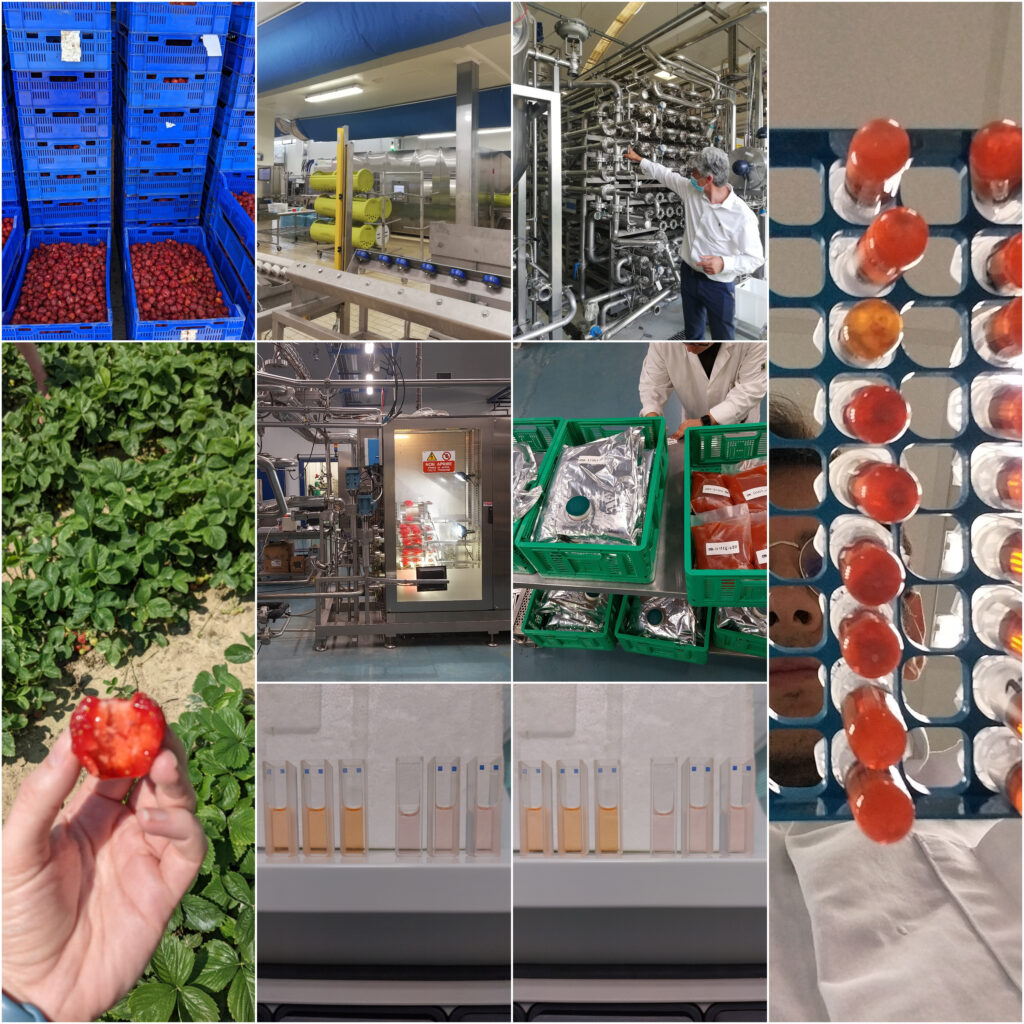[Thesis defence] 24/10/2024 - Jhoan RINCON: "Exploring the key parameters for the colour stability of strawberry-based products during processing and storage in order to avoid additives and favour natural products" (UMR SQPOV)
Mr Jhoan RINCON will publicly defend his thesis entitled "Exploring the key parameters of colour stability in strawberry-based products during processing and storage to avoid additives and favour natural products", on Thursday 24 October 2024.
Date and place
Oral defense scheduled on Thursday 24 October 2024 at 2pm
Location: INRAE -UMR SQPOV 228 route de l'Aérodrome CS 40 509 - Domaine Saint Paul, Site Agroparc 84914 Avignon Cedex 9 France
Room: PHI A or Amphi cœur de centre
Discipline
Chemistry
Laboratory
UMR_A 408 SQPOV - Safety and Quality of Plant Products
Composition of the jury
| Ms CARINE LE BOURVELLEC | INRAE | Thesis supervisor |
| Ms Lucia PANZELLA | University of Naples Frederico II | Rapporteur |
| Sylvain GUYOT | INRAE | Rapporteur |
| Mr Olivier DANGLES | University of Avignon | Thesis co-director |
| Mr Thierry DOCO | INRAE | Examiner |
| Ms Claire DUFOUR | INRAE | Thesis co-director |
Summary
Strawberry nectar is a popular product, but the stability of its colour after heat treatment and during storage remains a challenge. The main objective of this thesis was to explore the parameters involved in the colour stability of strawberry nectar, such as cultivar, ripening stage, harvest date, processing conditions and storage time. In addition, to better understand the mechanism of colour stability of strawberry anthocyanins, hydration of the red flavylium ion and thermal autoxidation were studied in a model system at pH 3.6, in the presence of different fractions of proanthocyanidin (PAC) and pectins. As expected, phenolic and polysaccharide compositions depended on cultivar, ripening stage and harvest date. Ripening and late harvest led to an increase in anthocyanin content and a reduction in PAC content, while changes in the other polyphenols were minor. Ripening and harvesting favoured the loss of pectin side chains. The greatest stability of nectar colour was observed in the overripe samples from the late harvest. Nectar colour stability was correlated in strawberries with high anthocyanin content, low PAC content and galactose-rich pectins. The effects of different processing methods on phenolic compounds, cell wall and colour stability were assessed by comparing heat treatment (HT), high pressure treatment (HPP) and pulsed electric field (PEF) on colour stability. Proanthocyanidins and anthocyanins remained the main phenolic classes after treatment, although storage led to a decrease in their content, particularly after PEF treatment. The constituent units of proanthocyanidins were significantly affected by treatment and storage, particularly (+)-catechin and epiafzelechin as extension units. Cell wall polysaccharides showed moderate stability after processing and storage, with only a marked decrease in the degree of methylation of pectins. The TT and OH methods resulted in better colour preservation after 60 days storage, while the non-thermal HPP and PEF methods resulted in higher colour degradation, probably due to partial enzyme inactivation. Interactions between pectins and anthocyanins were weak and did not significantly influence flavilium ion hydration of anthocyanins. Weak protection against reversible colour loss by hydration was demonstrated with PACs containing both procyanidin and propelargonidin units. However, proanthocyanidins had a negative impact on anthocyanin stability during heat treatment. Thus, the colour stability of strawberry nectars is mainly due to the high anthocyanin content of certain varieties, but also to the processing conditions, in particular TT and OH treatments, which lead to greater colour stability. This research offers essential prospects for improving the quality of fruit-based drinks.

Keywords Strawberry, Colour stability, Anthocyanin, Fruit juice, Polysaccharide, Polyphenol
Updated on 23 October 2024